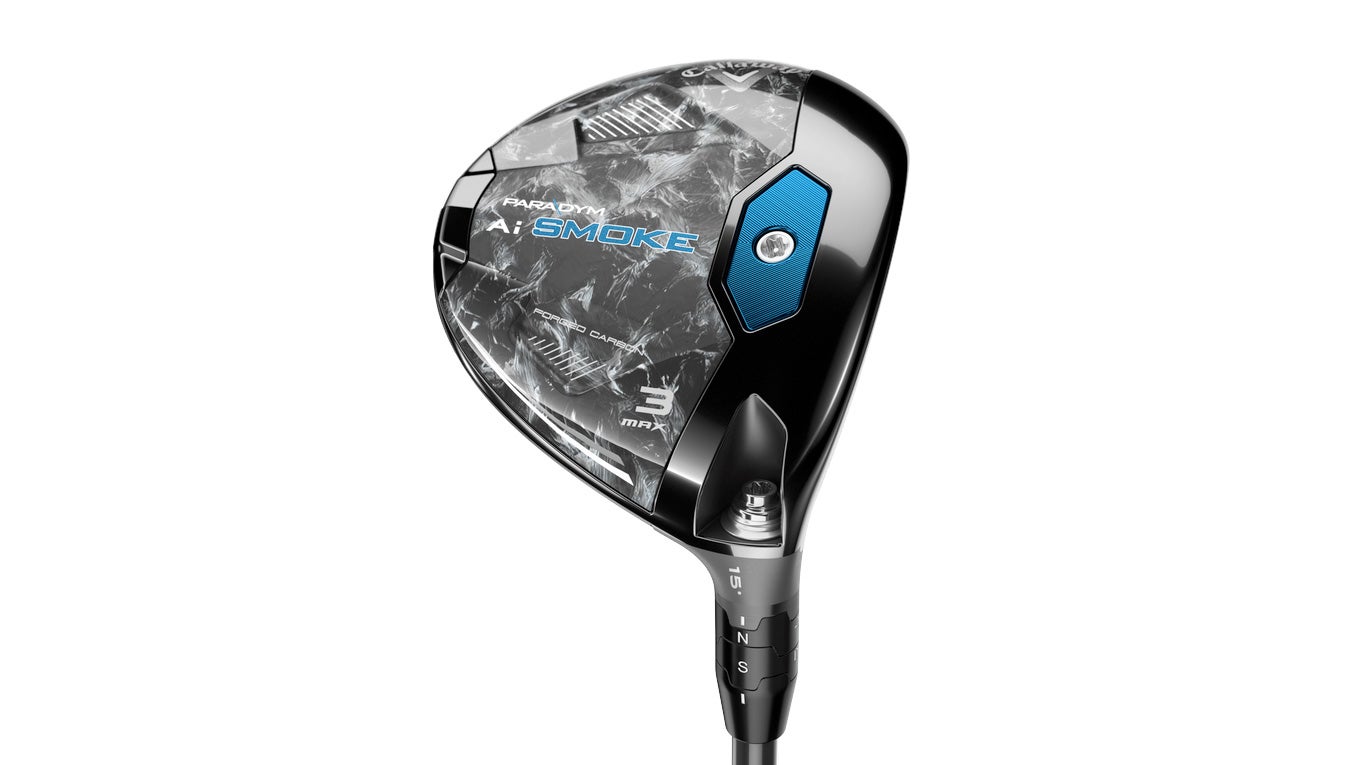HIGHLIGHTS

SWING CODE
The same approach Callaway applied to create the Ai Smart Face architecture on the Paradym Ai Smoke drivers was used to shape the “swing code” on each Paradym Ai Smoke fairway wood.

SHEDDING WEIGHT
Callaway managed to find a sole design that allows the composite section of the heads to be applied without reinforced steel bars. The design tweak netted 24 grams of weight that was applied equally to the front and back to improve MOI and launch characteristics.

STEELY RESOLVE
The sole on the Ai Smoke Triple Diamond remained steel for a good reason. Golfers who fit into the TD don’t need the heel-toe forgiveness found in the Max, Max D and Max Fast, so engineers used a heavier steel sole piece to keep the CG low for performance reasons.
Club Comparison
Select the club models you want to compare with the tabs below.
Callaway Paradym Ai Smoke Max
Callaway Paradym Ai Smoke Max D
Callaway Paradym Ai Smoke Max Fast
Callaway Paradym Ai Smoke TD
Player Type
Of the new models, the Ai Smoke Max is best suited for the widest range of golfers.
Forgiveness
The Max model features a strong amount of forgiveness and a neutral shot shape.
Player Type
The Max D model is designed for golfers with moderate swing speeds looking for a wood with draw bias.
Forgiveness
The Max D features a high level of forgiveness especially on mishits across the face.
Player Type
The lightweight Max Fast is best for golfers looking to increase their swing speeds.
Forgiveness
The Max Fast offers loads of forgiveness especially for players with slow swing speeds.
Player Type
The TD model is the Ai Smoke wood designed for better players looking for penetrating ball flight.
Forgiveness
With design focused on low-launch, low-spin performance, the TD features less forgiveness than the other models.
Callaway Paradym Ai Smoke Fairway Woods
Get yourself new Callaway Paradym Ai Smoke fairway woods with custom shafts and specs from Fairway Jockey today!
The same approach Callaway applied to create the Ai Smart Face architecture on the Paradym Ai Smoke drivers was used to shape the “swing code” on each Paradym Ai Smoke fairway wood.
Categorizing real players’ swings made it possible to create distinct segmentation across all four models, especially when it came to impact location.
While the path and attack angle remained somewhat similar, Callaway’s supercomputer noticed that golfers using the low-spin Ai Smoke Triple Diamond had a most centered impact location when compared to the Ai Smoke Max’s shot concentration in the low heel and high toe. The dispersion was even wider across the low heel and toe on the draw-bias Ai Smoke Max D and lightweight Ai Smoke Max Fast.
These learnings allowed the supercomputer to design specific faces for each model and loft that not only mitigate distance loss on off-center strikes but fine-tune launch and spin characteristics as well. It’s arguably the smartest face in golf.
Callaway also managed to find a sole design for the Ai Smoke woods that allows the composite section to be applied without reinforced steel bars. The design tweak netted 24 grams of discretionary weight that was applied equally to the front (12 grams) and back (12 grams) to improve MOI and launch characteristics.
Better players will notice the sole on the Ai Smoke Triple Diamond isn’t carbon composite. It actually remained steel for a good reason. Golfers who fit into the Triple Diamond don’t necessarily need the heel-toe forgiveness found in the Max, Max D and Max Fast, so engineers chose to go with a heavier steel sole piece to keep the center of gravity low for performance reasons.
Callaway Paradym Ai Smoke Drivers
Learn more about Callaway’s Paradym Ai Smoke drivers here.
Callaway Paradym Ai Smoke Irons
Learn more about Callaway’s Paradym Ai Smoke irons here.
Callaway Paradym Ai Smoke Hybrids
Learn more about Callaway’s Paradym Ai Smoke hybrids here.
 SWING CODE
SWING CODE  SHEDDING WEIGHT
SHEDDING WEIGHT  STEELY RESOLVE
STEELY RESOLVE 













